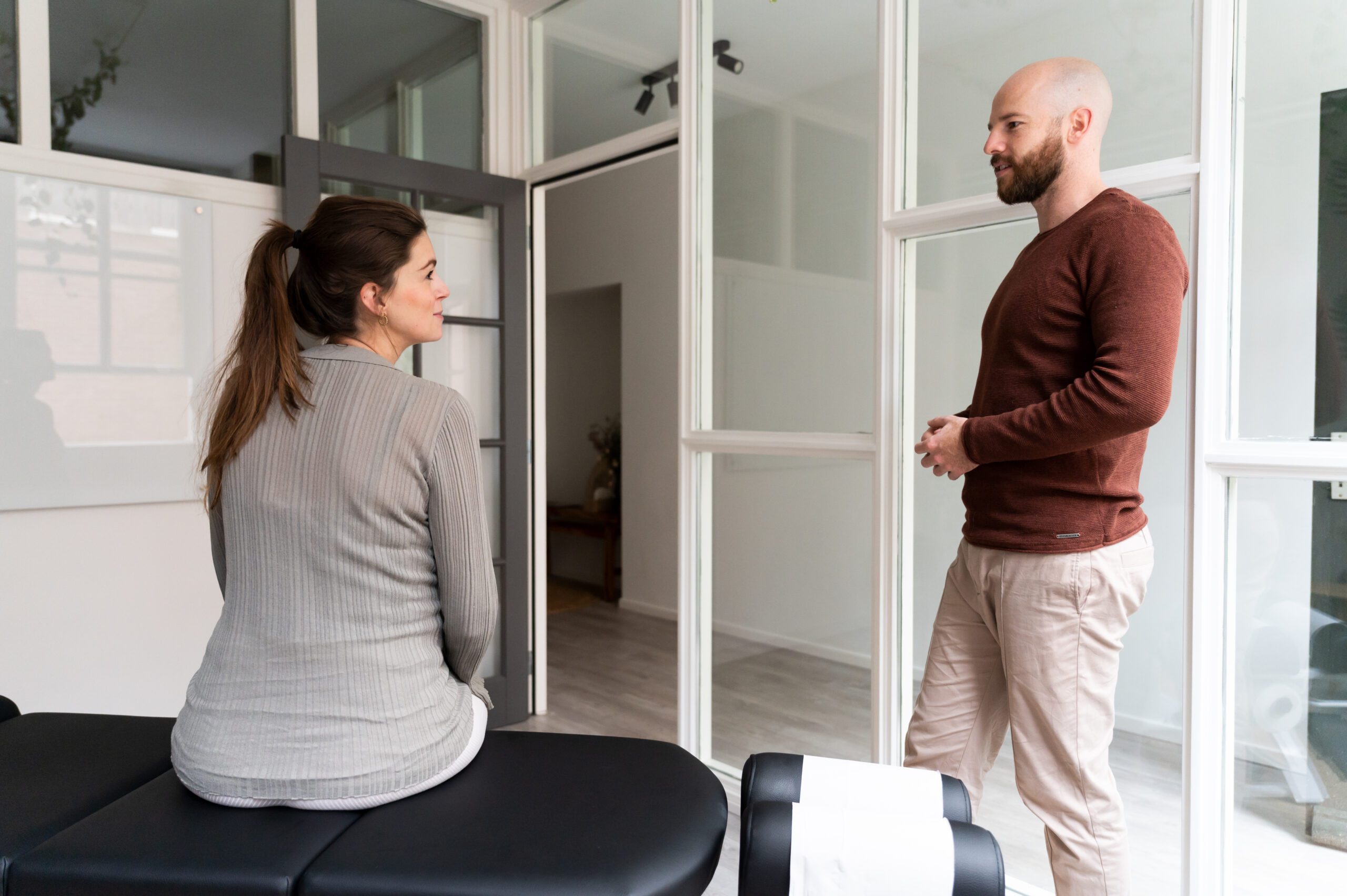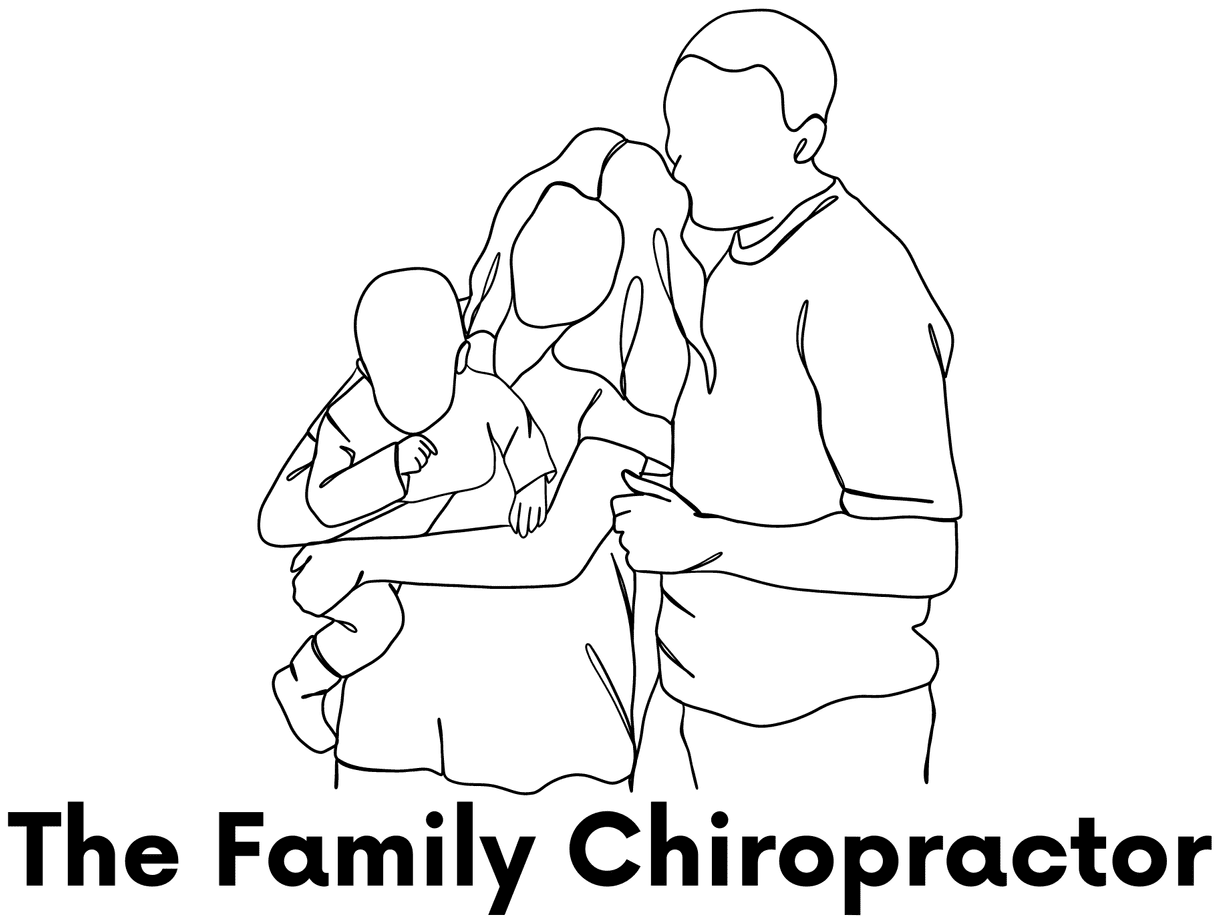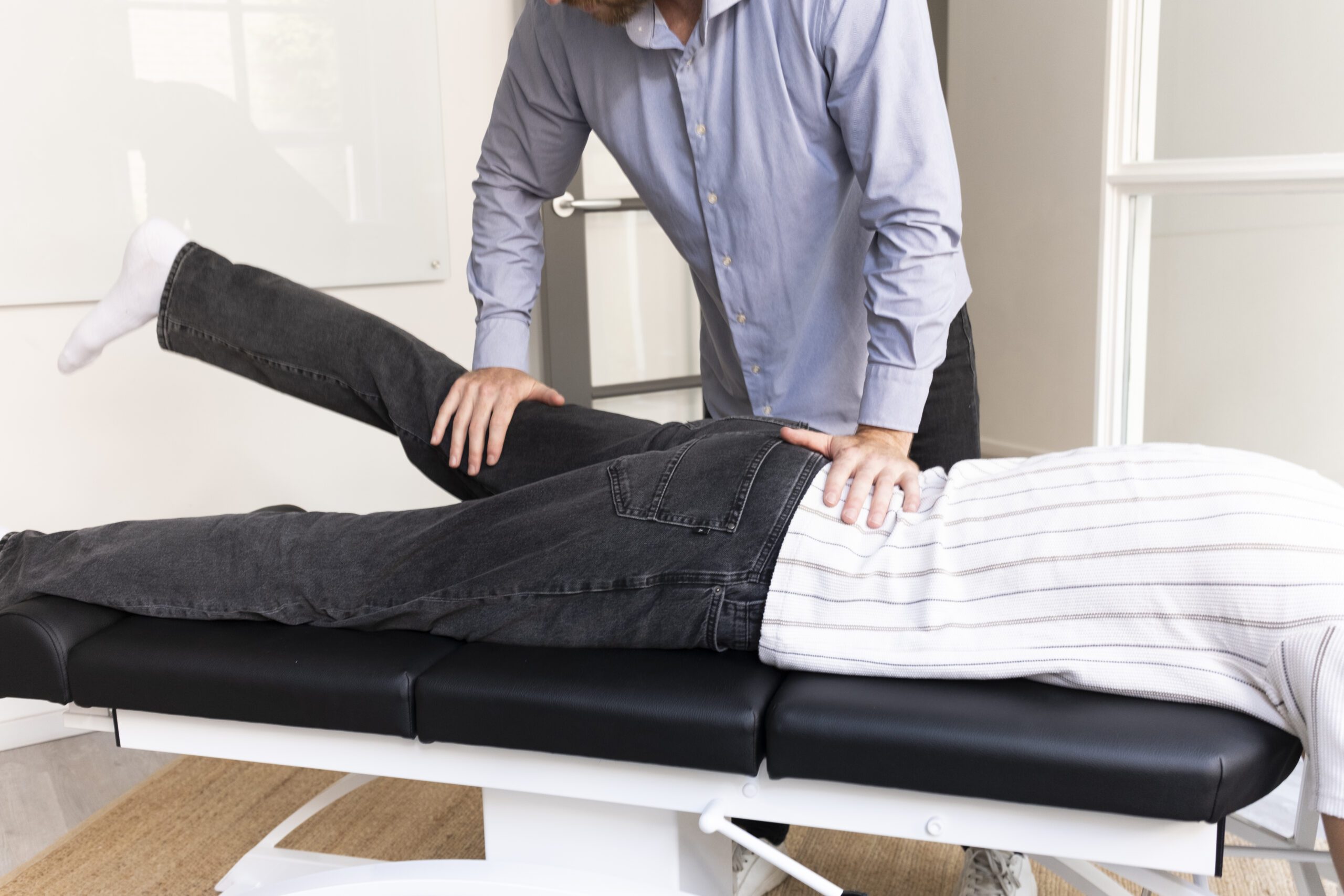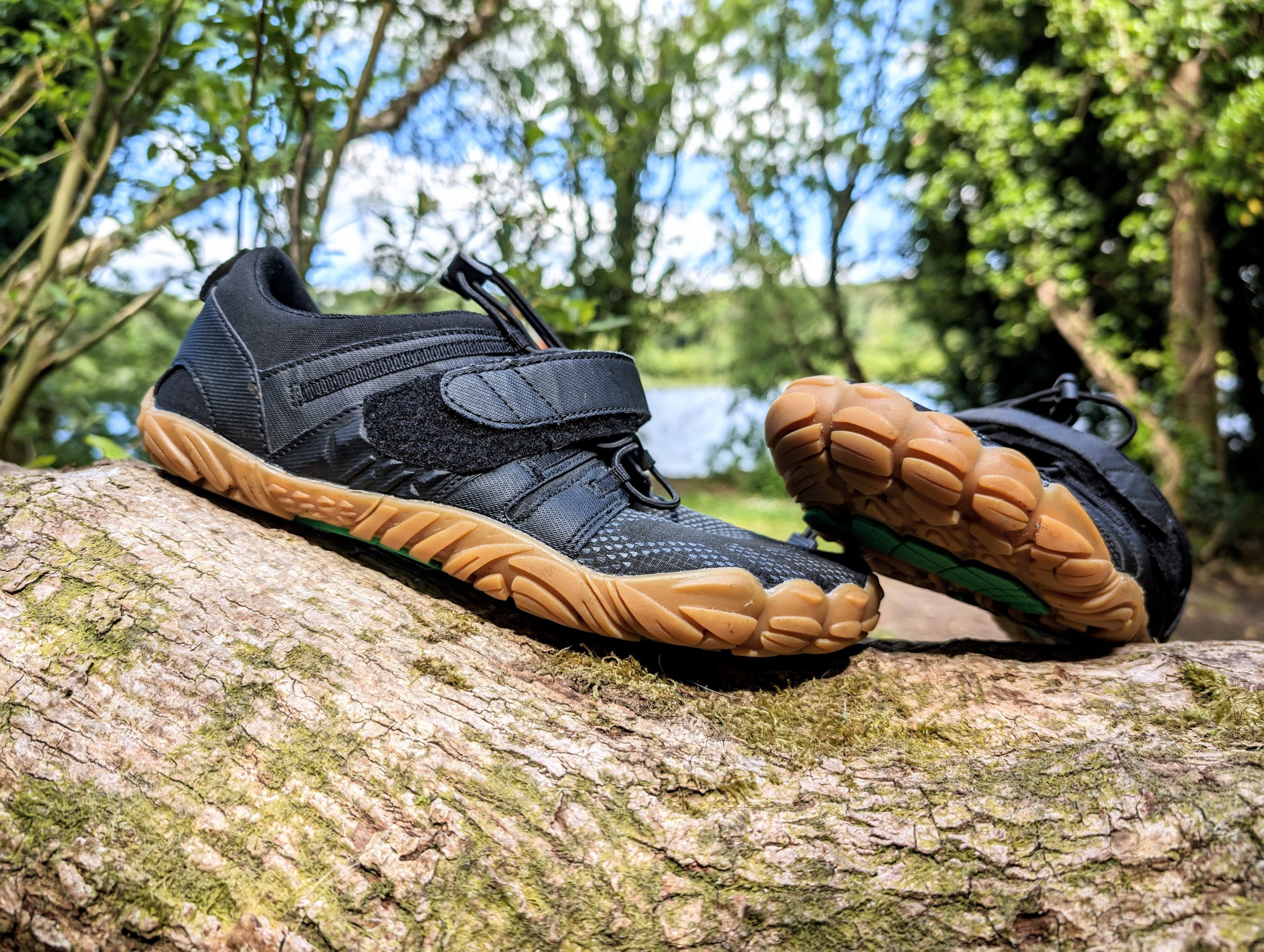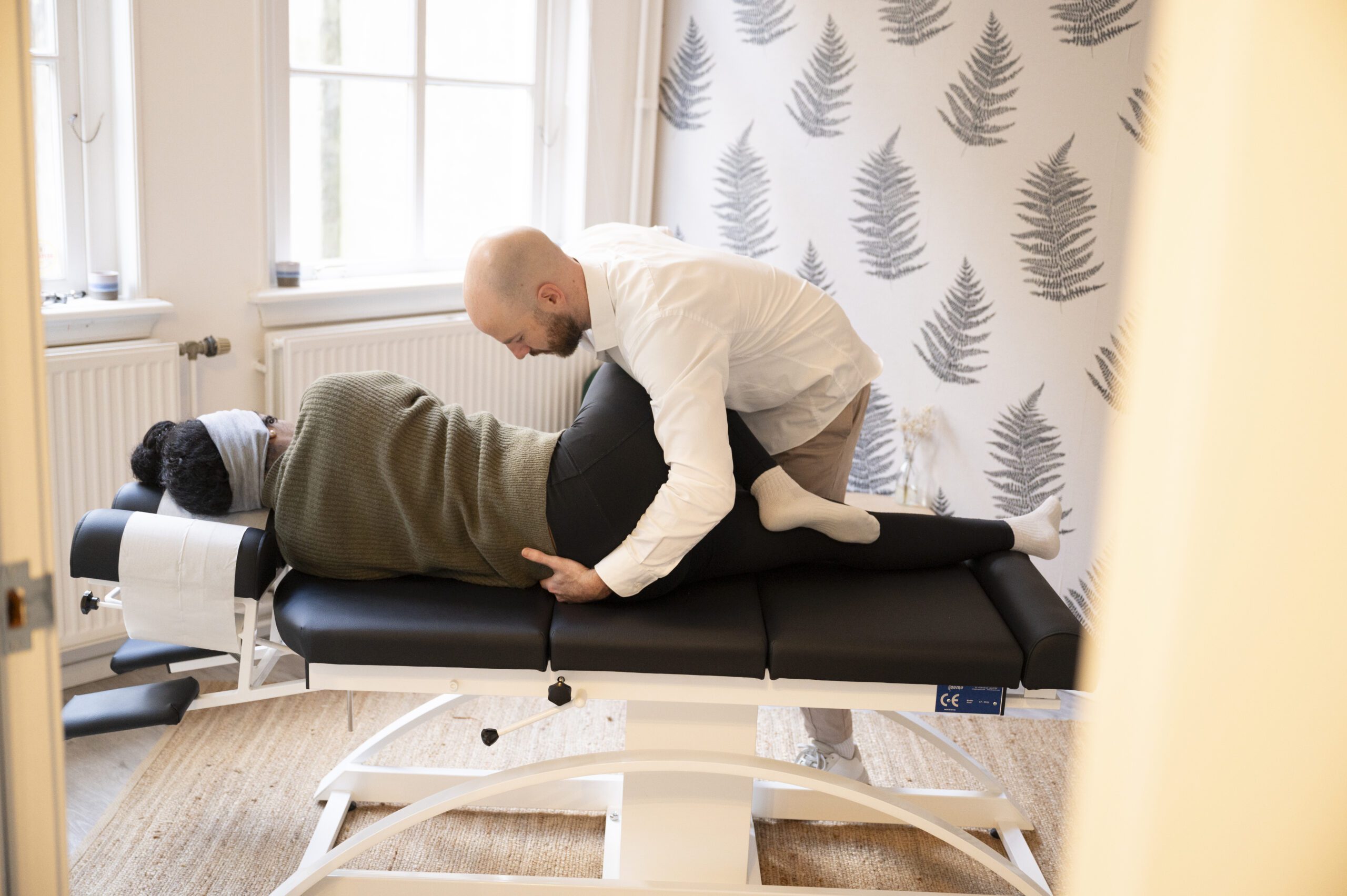
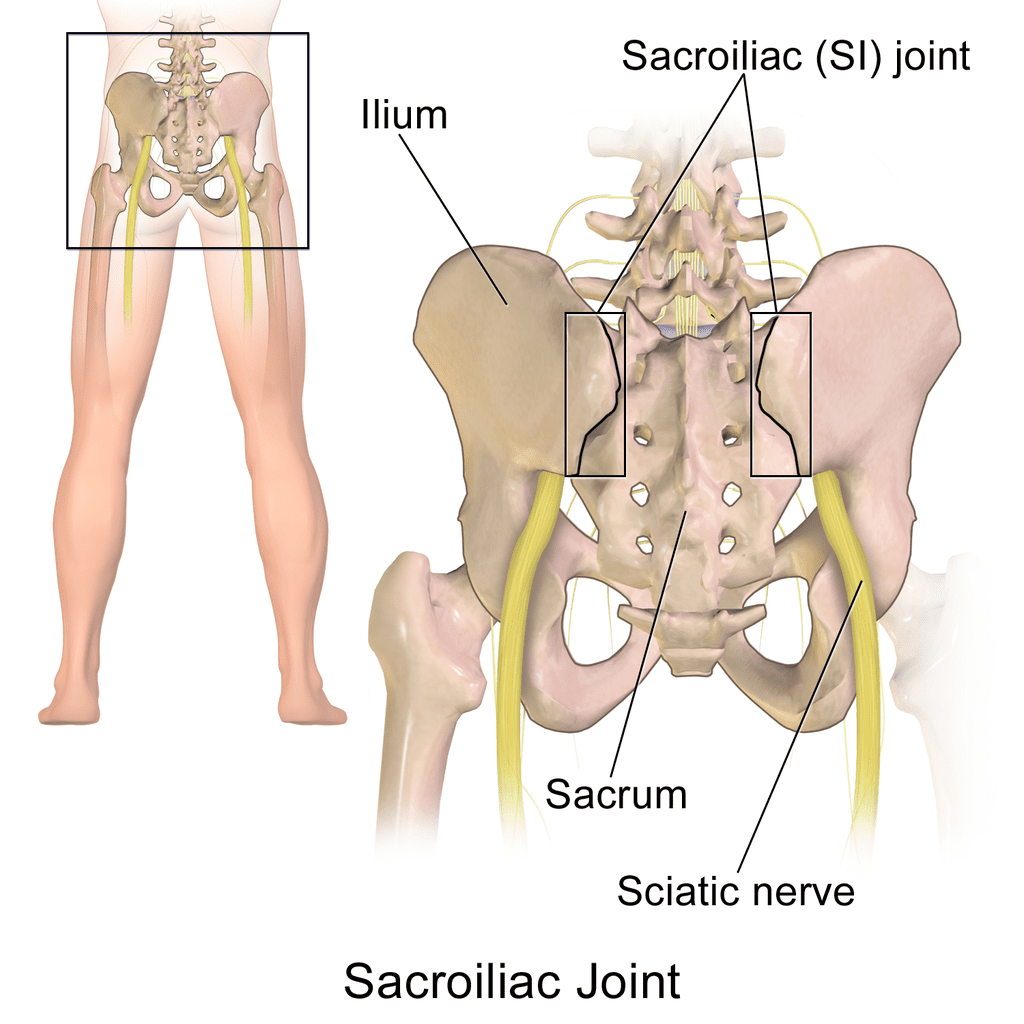
Source image: Blausen.com staff (2014). "Medical gallery of Blausen Medical 2014“. WikiJournal of Medicine 1 (2). DOI:10.15347/wjm/2014.010. ISSN 2002-4436.
What is the sacroiliac joint
Anatomy of the sacroiliac joint
Function of the sacroiliac joint
Problems and SI joint pain
An SI joint that is not functioning optimally can cause various problems and pain. Since the SI joint has an important function in all kinds of daily activities (like walking, lifting, jumping etc), a painful SI joint can have a significant impact on your quality of life. Below, we discuss the causes and symptoms of SI joint pain.
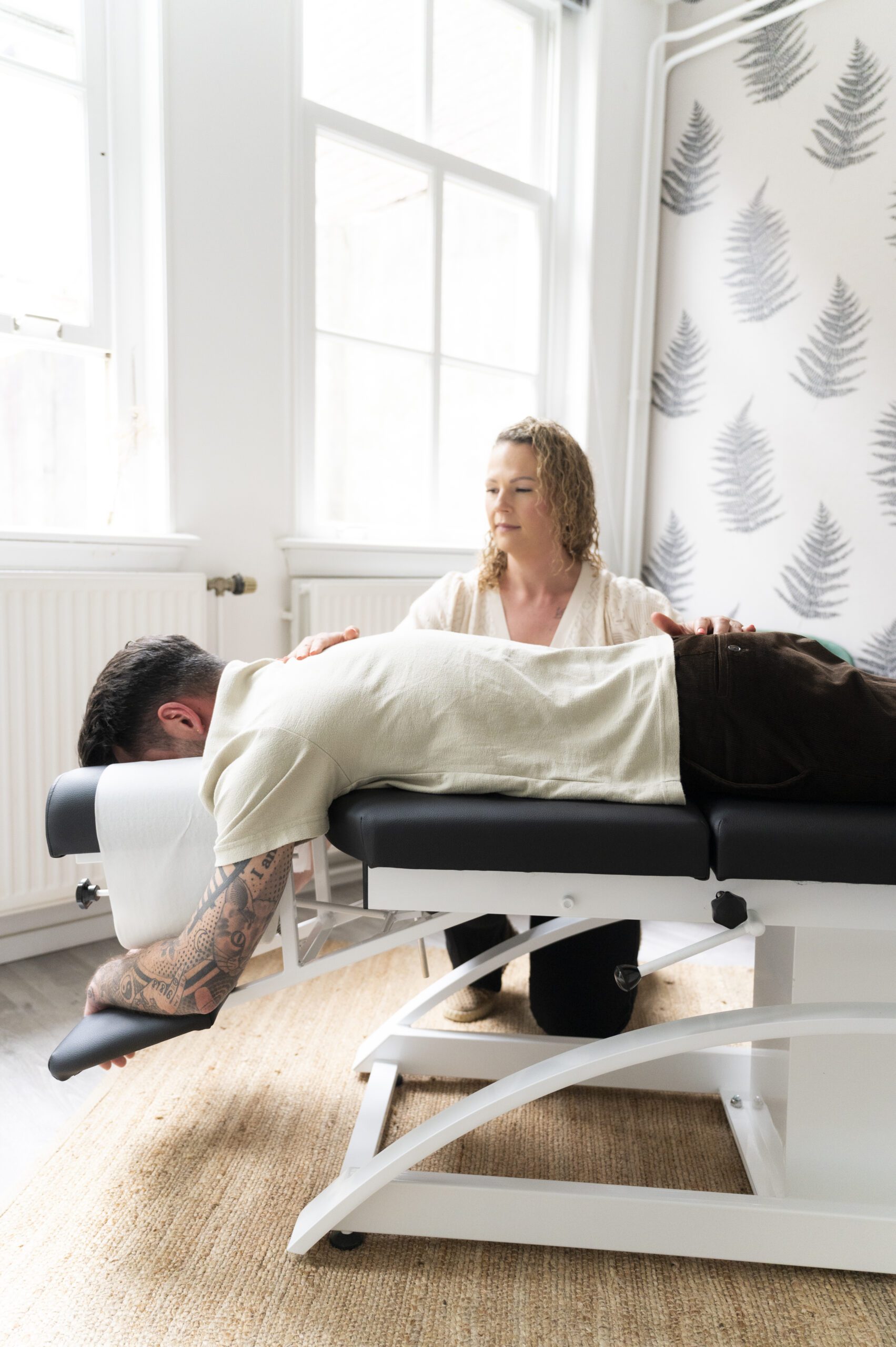

Causes of sacroiliac joint pain
There are several causes that can lead to SI joint pain. Below, we have listed some common causes:
Injury or trauma: Direct injuries to the pelvic region, such as a fall or a car accident, can cause damage to the SI joint. These forms of trauma can lead to inflammation, displacement or even fractures in the joint, resulting in pain and movement restrictions.
Overload: prolonged or repetitive movements that put pressure on the SI joint, such as heavy lifting or intense physical activities, can lead to strain and pain. This repeated stress can wear down the cartilage in the joint and overload the surrounding muscles and ligaments.
Osteoarthritis SI joint: Inflammatory diseases such as osteoarthritis, osteoarthritis or rheumatoid arthritis can affect the SI joint. Osteoarthritis causes wear and tear of the joint cartilage, leading to pain, stiffness and reduced mobility. Rheumatoid arthritis is an autoimmune disease that causes inflammation in the joint, which can also cause pain and damage.
Pelvic asymmetry: differences in the length of the legs or misalignments of the pelvis can overload the SI joint and cause pain. Asymmetries can increase pressure on one side of the pelvis, leading to imbalance and overloading of the joint.
Degenerative diseases: conditions such as degenerative disc disease or ankylopoetic spondylitis can affect the SI joint and cause pain. Degenerative disc disease leads to the breakdown of intervertebral discs, which can increase the strain on the sacroiliac joint. Spondylitis ankylopoetica is a chronic inflammatory disease that can stiffen the joints of the spine and pelvis.
Infection: Although a rarer cause, an infection in the SI joint, known as sacroiliitis, can cause severe pain and inflammation. Infection can be caused by bacteria travelling to the joint through the bloodstream or by direct trauma to the area. Sacroiliitis usually requires medical treatment with antibiotics and sometimes drainage of the joint.
SI joint pregnant
During pregnancy, a woman's body undergoes many changes that can affect the sacroiliac joint (SI joint). During pregnancy, the body produces the hormone relaxin, which helps to soften ligaments and make pelvic joints more flexible in preparation for childbirth. While this is a natural process essential for childbirth, it can also lead to instability in the SI joint, which can cause pain and discomfort.
The extra weight gain during pregnancy puts more pressure on the SI joint, which can lead to pain and tension. This increased strain can be especially noticeable in the later stages of pregnancy. Also, the growing belly can change a woman's posture and centre of gravity, which can place additional stress on the SI joint. These postural changes can contribute to pain and discomfort in the lower back and pelvic area.
Want to know more about chiropractic care during pregnancy? Read here than more!

SI joint complaints & SI joint pain symptoms
Most common SI Joint pain symptoms
Low back pain: one of the most common SI joint complaints is pain in the lower back. This pain can range from mild to severe and is often concentrated on one side of the back, although it can also affect both sides. The pain is often described as a dull, nagging ache that can worsen with certain activities or postures.
Pain in the hips: pain in the hip area, again often on one side, is another characteristic symptom. This pain can radiate to the glutes and upper thighs, which can make it difficult to walk or stand for long periods of time.
Radiating pain to the rest of the body: SI joint pain can radiate to other parts of the body, such as the groin and legs. This can be very similar to sciatica, where the pain radiates along the hip and leg. It is important to recognise the difference, as SI joint pain is often more concentrated in the pelvic area.
Pain when moving: People with SI joint pain often experience an increase in pain with certain movements. This may include getting up from a sitting position, walking or climbing stairs, and bending or twisting the trunk. Certain positions can worsen the pain, especially if weight is distributed unevenly across the pelvis.
Stiffness: Stiffness in the lower back and hips is a common symptom, especially after prolonged sitting or lying down. This stiffness can lead to reduced range of motion and the feeling of limited flexibility in the pelvic region.
Clicking or snapping sound: some people experience a clicking or snapping sensation in the pelvic area, especially during movements such as twisting or bending. This sound may be accompanied by a sudden, sharp pain and can be a sign of instability in the SI joint.
Reduced mobility: Restricted range of motion in the lower back and hips can be a sign of SI joint pain. This can make performing daily activities difficult and can lead to a reduced quality of life. People may have difficulty performing simple tasks such as stooping, lifting or standing for long periods of time.
Swelling and inflammation SI joint: although less common, some people with SI joint pain may experience visible swelling and inflammation around the joint. This inflammation can contribute to the pain and stiffness and can sometimes be accompanied by heat and redness in the affected area.
Difficulty with balance and stability: SI joint pain can also affect balance and stability. People may struggle to maintain stable posture, especially when performing activities that require balance, such as standing on one leg or climbing stairs.
Fatigue: chronic pain can lead to fatigue and a general feeling of malaise. The constant pain and the effort to manage it can be exhausting, leading to reduced energy levels and motivation.
How can an SI joint chiropractor help?
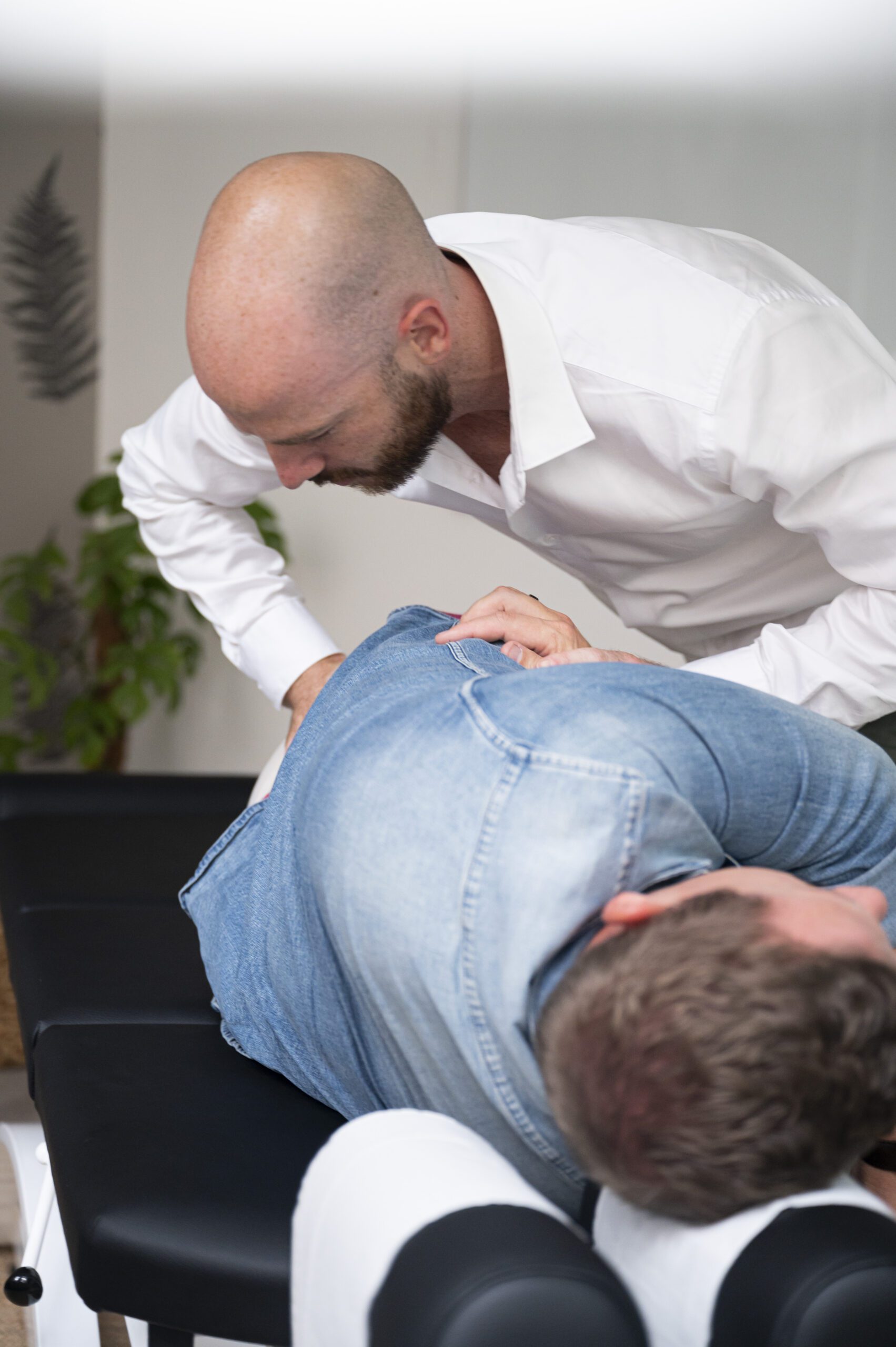
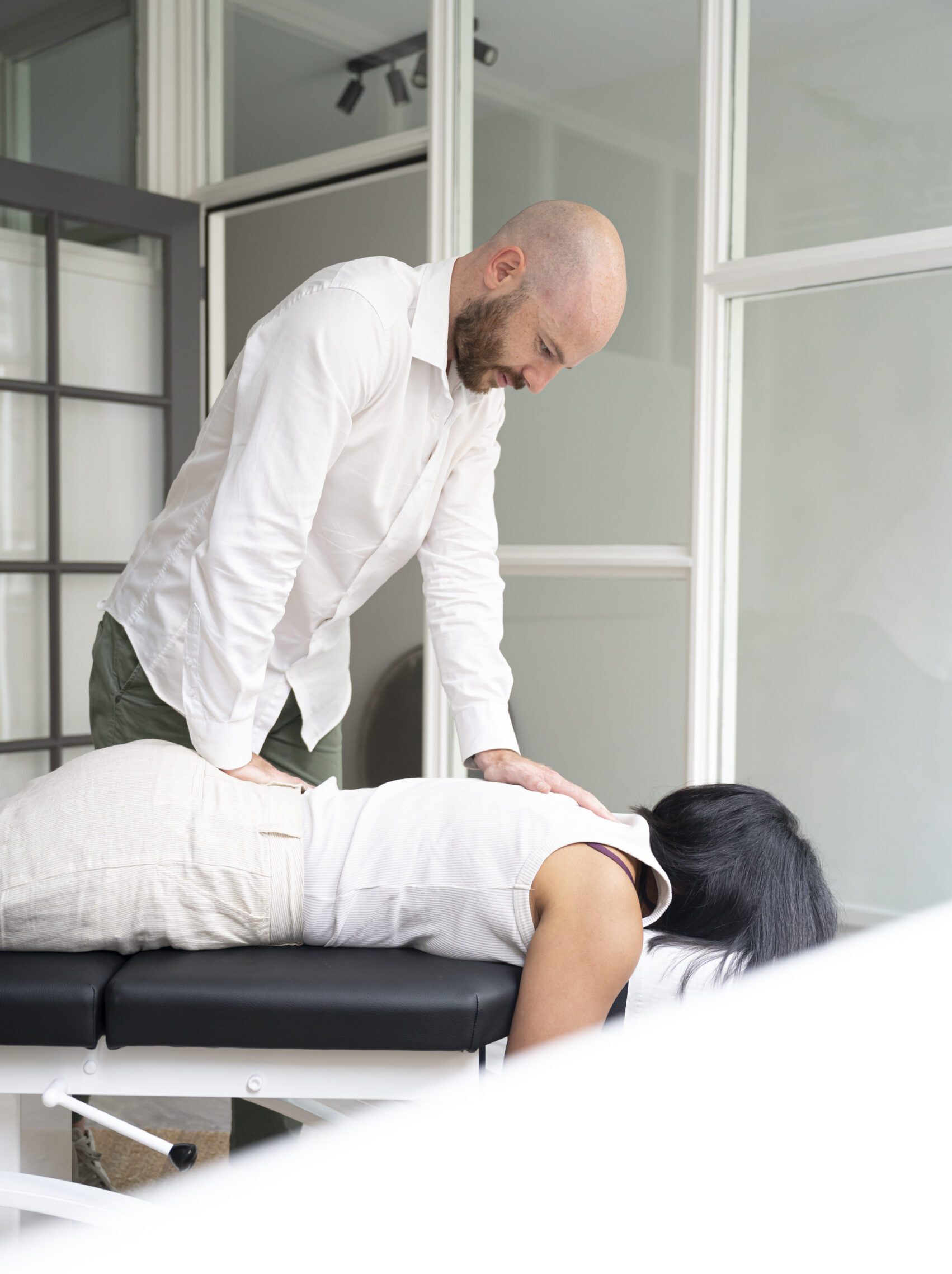
Benefits of an SI joint chiropractor
Chiropractic treatments are effective in relieving pain and improving the functionality of the SI joint. By correcting alignment and reducing tension, patients can experience a significant reduction in their pain. By improving SI joint mobility, chiropractic treatments can help restore range of motion and increase overall flexibility. Chiropractic care offers a non-invasive approach to treating SI joint pain without the use of medication or surgery. This makes it an attractive option for people seeking natural pain relief, and wanting to avoid surgery or medication. Because chiropractors do not just focus on suppressing the (pain) symptoms, but instead really look for the cause of the problem, they can offer a future-proof solution to the problem. Chiropractic treatments can help patients relieve their pain, improve their mobility and increase their overall quality of life. Therefore, if you suffer from SI joint pain, a visit to a qualified SI joint chiropractor can be an exceptionally valuable step towards recovery.
How to find a good SI joint chiropractor?
Finding a qualified chiropractor to treat SI joint pain is an important step towards recovery. Check that the chiropractor has undergone recognised training and is a member of a professional association. At The Family Chiropractor All our chiropractors are registered with the DCF and SNRC, which also makes you eligible for reimbursement by health insurance. Look for a chiropractor experienced in treating SI joint pain. Chiropractors who regularly work with this condition have more knowledge and skills in dealing with such complaints. Read online reviews and patient testimonials. This can give you insight into the experiences of others and the quality of care provided by the chiropractor. Also, some practices offer the opportunity to have a scheduling an introductory appointment, in which you can schedule a short consultation with the chiropractor without any obligation. This gives you the chance to ask questions about their experience, treatment methods and what to expect from the treatment.
Pay attention to how the chiropractor communicates and whether you feel comfortable. A good chiropractor listens attentively, answers your questions and explains the treatment plan clearly. And finally, trust your gut. If you feel comfortable and trust the chiropractor, you are more likely to have a positive experience.
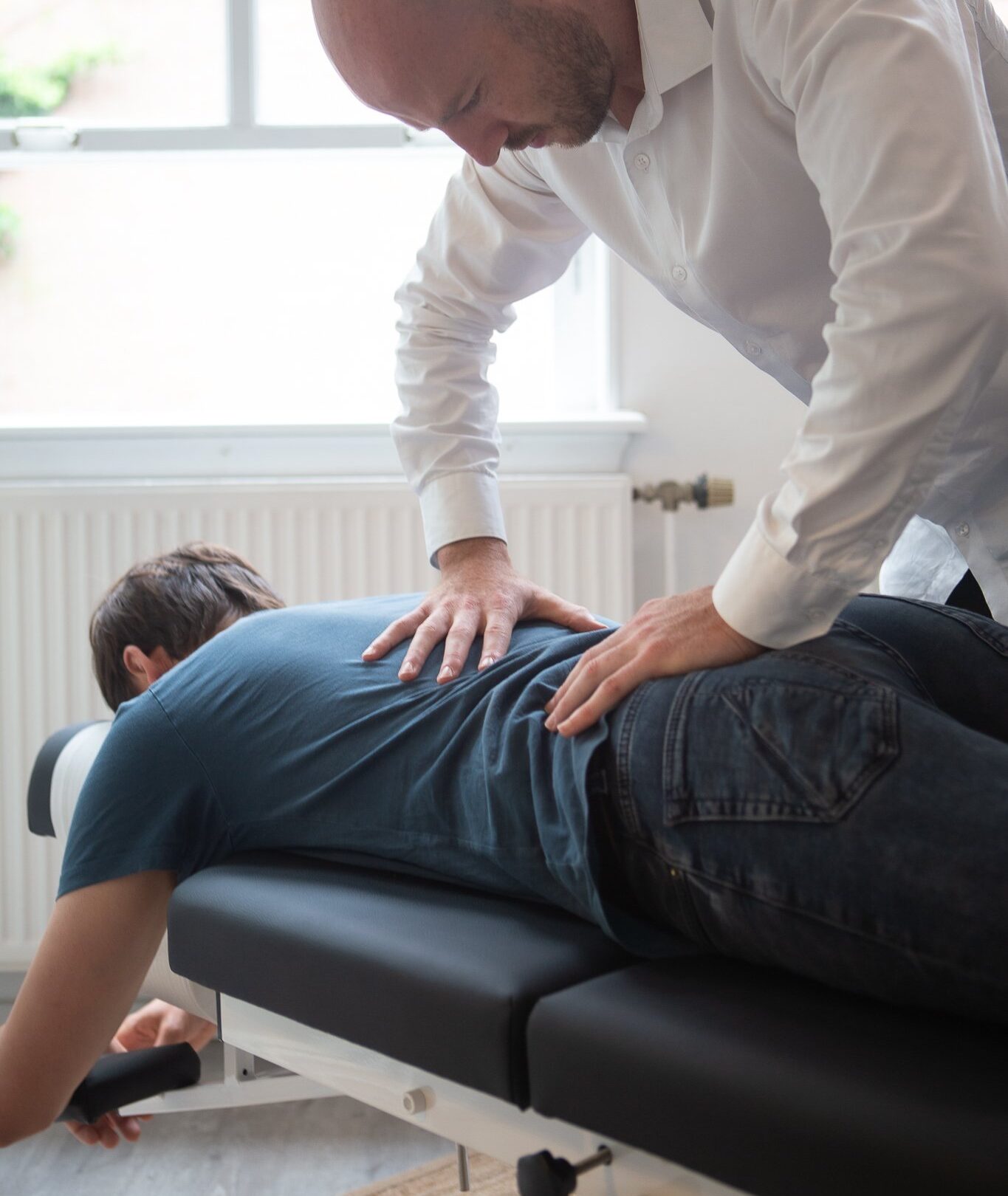
SIJ exercises
In addition to visiting an SI joint chiropractor, there are also a number of things you can do yourself to speed up the recovery process. Below, we have described some effective SI joint exercises that can help relieve pain and improve the stability and mobility of the SI joint
SI Joint Exercise 1: Bridge. Lie on your back with your knees bent and your feet flat on the floor. Slowly lift your hips up, tightening your glutes, until your body forms a straight line from your shoulders to your knees. Hold this position for a few seconds and then slowly return to the starting position. Repeat 10-15 times.
SI Joint Exercise 2: Cat Cow Stretch Get down on your hands and knees, with your hands straight under your shoulders and your knees straight under your hips. Inhale as you hollow your back and raise your head (cow position). Then exhale as you arch your back, bring your chin to your chest and point your tailbone down (cat position). Repeat this movement slowly and smoothly 10-15 times.
SI Joint Exercise 3: Side leg lifts Lie on your side with your legs extended. Slowly lift your top leg up, while keeping your hips stacked and your body straight. Hold your leg in the air for a moment and then slowly lower it. Repeat 10-15 times on each side.
SI Joint Exercise 4: Piriformis Stretch Lie on your back and cross your ankle from one leg over the other, just above the knee. Grab behind the uncrossed leg and slowly pull your knee towards your chest until you feel a stretch in your buttock and SI joint. Hold this position and gently breathe in and out. Then switch sides and repeat.
SI Joint Exercise 5: Pelvic tilts Lie on your back with your knees bent and your feet flat on the floor. Tilt your pelvis forward by pushing your lower back into the ground and lifting your buttocks slightly. Hold this position for a few seconds and then return to neutral. Next, tilt your pelvis backwards by lifting your lower back off the ground. Repeat this movement slowly and in a controlled manner 10-15 times.
SI Joint Exercise 6: Leg Rotations Lie on your back with your legs extended. Bend your knees and bring your feet flat on the ground. Slowly drop your knees to one side, hold for a few seconds and then bring them back to the middle. Repeat on the other side. This helps stretch and mobilise the muscles around the SI joint.
Performing these SI joint exercises regularly can help improve mobility, stability and strength around the SI joint, which can reduce pain and discomfort. Remember to perform these SI joint exercises slowly and in a controlled manner and stop if you experience pain. Consult your chiropractor if you have any specific questions,
Frequently asked questions
How do I know if I have a problem with my SI joint?
How to loosen SI joint in SI joint pain?
How to crack SI joint?
